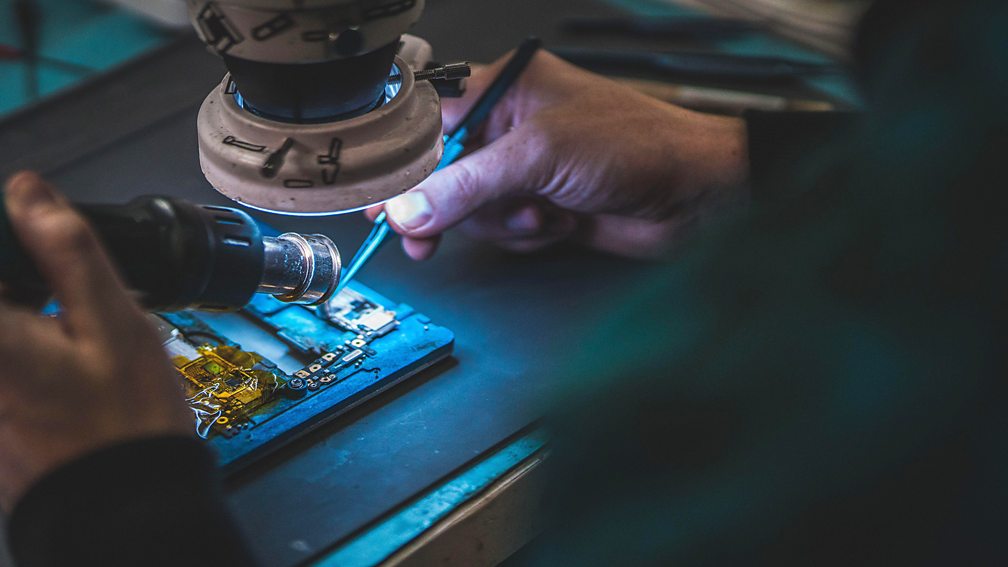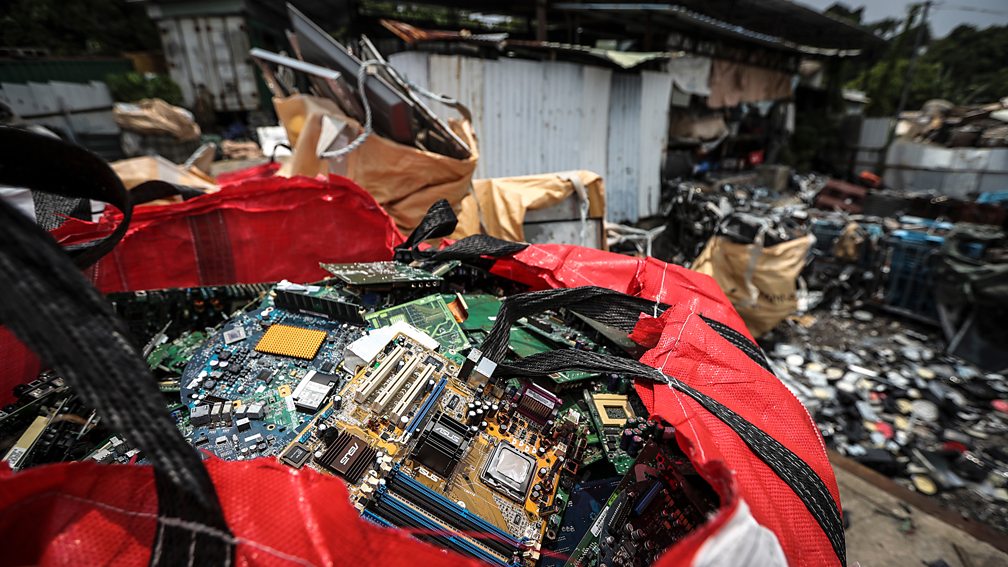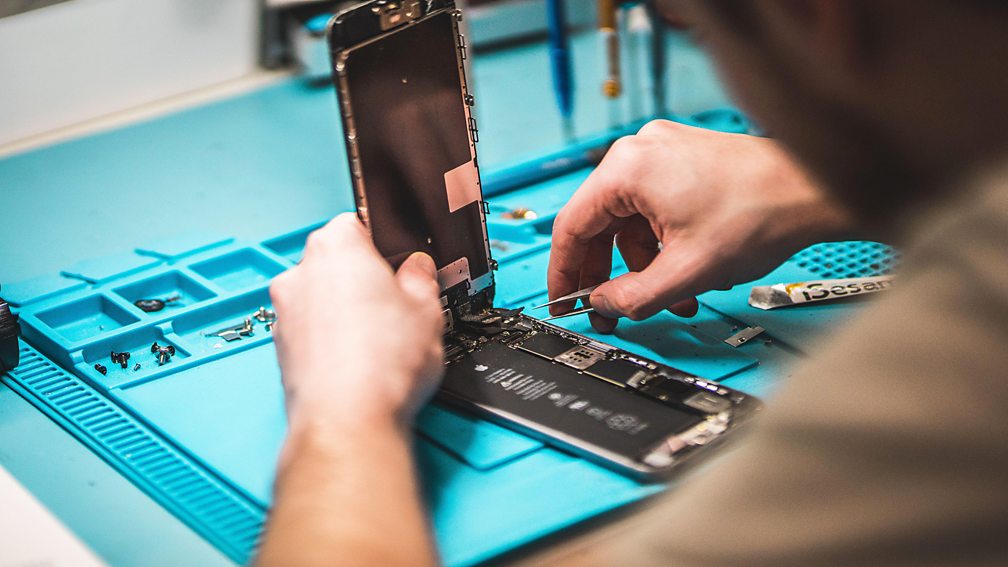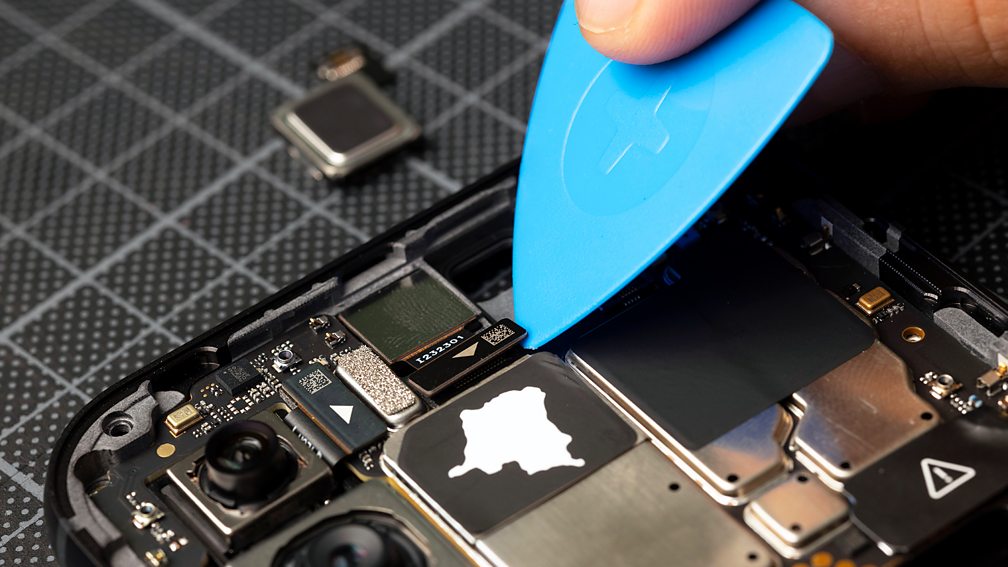How the right to repair might change technology

Fixing devices and appliances is currently tricky – but new consumer rights laws are seeking to change that. Chris Stokel-Walker looks at how this might change the technology we use.
Surera Ward has been running Girls Fix It, a tech repair service near Philadelphia, Pennsylvania, for around four years. In that time, she and her team have got better at understanding the electronic devices that come into their workshop. But fixing them hasn't. "It's getting harder and harder to repair different devices," she says.
It's not just getting access to important bits of equipment that Ward finds difficult – often relying on importing specialised tools from China to help her and her staff work. Once her team have conducted a repair on a customers' phone, for example, the device will often throw up error messages hard coded in by manufacturers to discourage users from going to third-party experts.
A recent increase in a practice known as "parts pairing", which ties individual parts to the devices they're shipped with using unique serial numbers, has made it harder to repair them.
Sign up for Tech Decoded
For more technology news and insights, sign up to our Tech Decoded newsletter. The twice-weekly email decodes the biggest developments in global technology, with analysis from BBC correspondents around the world. Sign up for free here.
But as new laws are introduced both in the US and Europe to give consumers more power to repair their devices, how might this change the nature of the technology industry? The hope is that it might help to reduce the environmental impact of technology by helping our devices last longer. Could it also improve the quality of the products we buy? Or might it simply offer a way for manufacturers to hike prices while selling expensive "repair kits" and spare parts to consumers?
Ward's business and others like it often charge up to 50% less than an official repairer, such as Apple's Genius Bar, would when they fix devices. But many customers don't go to her because they're worried about error messages or some the functionality of their device being restricted after an "unofficial repair".
The high cost of official manufacturer repair services, combined with the difficulty in accessing them, often means consumers are put off and simply replace their device instead.
All of which means that increasingly, we chuck them out.
"We are living in times in which our growth model is basically built on throwing away stuff," says René Repasi, a German member of the European Parliament who is leading the progression of a right to repair law for European consumers through the parliament. "Basically every two years we buy a new product, and the production capacity of our industry is based on this kind of model."

Many of the electronic goods in our homes – from televisions to vacuum cleaners – are used on average 2.3 years shorter than their designed or desired lifespan, according to a report by the European Environment Agency. It highlights the problem of increased obsolescence, where products become either quickly outdated in the eyes of consumers as they are encouraged to buy newer models, or the hardware becomes incompatible with updated software. Some manufacturers also stop releasing security updates for software running on older devices, and some major firms have even been fined for deliberately slowing down devices with software updates.
The impact of this on the environment is profound, both in terms of the surging amount of electronic waste produced (an estimated 53 million tonnes of it was discarded in 2020) and the extraction of rare-earth metals needed to manufacture new devices.
"I see this as a deep-rooted story of strategies around planned obsolescence," says Aaron Perzanowski, professor of law at the University of Michigan, and an expert on the right to repair. In Europe, Repasi says that ironically a European law is in part to blame for the short shelf life of our electronic and household products. In the 1990s, European legislation introduced a minimum two-year guarantee period, during which time the buyer of any electronic item had the right to opt between getting a completely new product, or getting their existing one repaired if something went wrong.
Coupled with the speedy pace of technological development, it became obvious that if something went wrong with an item, most consumers would elect to get a brand-new version of the newer model, rather than repair their older one. "Whenever your next iPhone generation is presented, it is presented to the public as this is the most disruptive invasion of the last 50 years," says Repasi. "It's going to change society forever. Although technically speaking, there's only an increase of the amount of pixels per screen."
In part, the minimum-guarantee legislation was a response to manufacturers building in end dates for their products since the early part of the 20th Century, says Perzanowski. However, the wide deployment of software in consumer devices helped strengthen companies' ability to restrict the ability to repair items.
That strength has only increased over time, says Perzanowski – though it has triggered an equal and opposite reaction from consumers sick of being locked into an endless cycle of buying new products from companies. "There are a couple of explanations for why I think we've seen the momentum shifting in recent years," he says.
One is the increasingly strong-armed way companies are building in obsolescence, requiring users go to official outlets to fix any errors with their devices or making spare parts prohibitively expensive. Repasi points to dishwashers, which can be bought from as little as €150 (£130/$150) from new (in the US they might typically cost closer to $200 for a cheap model), for which spare parts to replace anything that goes wrong can cost €100 (£86/$100). Such a calculation would obviously make consumers consider just buying a new one, he argues.
It's part of a wider movement towards discouraging repair at the expense of replacing items with new. "Companies got a little too aggressive, a little too greedy, and overreach in some important respects," says Perzanowski, pointing to examples of printers that contain ink in cartridges installed within them that won't print or scan if a user has stopped a subscription to their service. This so-called razor-and-blades model of pricing, where a user is locked into subscribing for a service for a device they own, has become prevalent across the technology industry. Take cloud storage subscription services that free-up memory on devices, as an example. If an account is closed down, it may mean the consumer would lose the data stored there, or if they move to a rival manufacturers' device, no longer be able to access it.
Enshrining rights in law
Such issues add up to a world in which many consumers feel encouraged, if not outright compelled, to purchase new items rather than try to get them replaced.
It has led some regulators to step in to reign in the excesses of consumer culture, and to advocate for the right to repair.
The European Union has been one of the main leaders in advancing the right to repair, and other legislation like it that allows consumers to be free from being locked into expensive ecosystems by device manufacturers. We're already seeing the impact of those legislative demands for the benefit of end users. Apple's latest iPhone, the iPhone 15, includes a USB-C charging port, rather than Apple's proprietary Lightning cable slot.

The shift was made in response to EU rules mandating common chargers for electronic devices, in order to prevent consumers having to buy multiple costly, specialised cables and chargers for devices. An official Lightning cable charger costs £19 ($22) in the UK, whereas a generic USB-C cable can be bought for a tenth of that price.
And a right to repair law is currently making its way through the European Parliament, with an initial vote in October and a whole-parliament vote in November. The hope is that the law could become EU law early next year.
In the meantime, countries are taking national-level action to try and raise awareness of the harm of disposing of, rather than repairing, items. Since 2021, some electronic devices sold in France – including smartphones, washing machines, laptops, lawn mowers and televisions – have come with a repairability score, marked on five categories as dictated by the French environment ministry. The goal is to highlight which products are repairable – and which aren't – and hopefully nudge consumers into picking the former.
In California, the Right to Repair Act has also been introduced into law, joining similar legislation in New York, Colorado and Minnesota. These require manufacturers to make the appropriate tools, parts and software available to consumers for seven years after production so they can be used to repair devices. It has already seen companies such as Apple develop a "Self Service Repair" scheme and sell repair kits with instructions for its devices.
President Joe Biden also recently signed an executive order aimed at giving US consumers the right to repair their own devices – a move that received some backing from manufacturers.
"I do think we're in a better position today in many respects, than we were three or four years ago," says Perzanowski. But he still believes there's a long way to go to ensure that consumers have rights commensurate to the amounts they're spending on technology, hardware and household appliances.
And for that reason, Perzanowski is a supporter of a multi-pronged approach to fighting for the right to repair. "This is a complicated problem that is not going to be solved through any one rule, or any one court case, or through any one piece of legislation," he says.
How will products change?
Such consumer-level actions, coupled with top-down regulatory changes, will hopefully change the way tech products are made, sold and used – encouraging more repair, rather than replacement.
Girls Fix It's Ward suggests that little needs to be changed on a hardware level for devices to be more fixable. "With the technology we have, they can make these changes and it not affect the devices," she says. "Some of these things are more software-related. The way the phone functions wouldn't change."

But that requires manufacturers to change the way they set-up devices. "What I would like to see is a combination of companies dealing with regulatory pressure and market pressure to design products that are more repairable, that are more durable, that are easier and cheaper to repair," says Perzanowski.
Change is inevitable, says Repasi, who believes the regulatory moves will have a significant impact because of the response he has encountered from manufacturers. "Since they have to be enacted, it's more of a guess [what products will look like in the future]. But you get a first idea on the basis of the reactions of lobby organisations working on behalf of the manufacturers," he says. Manufacturers have fought tooth and nail for their ability to maintain the need for officially branded components.
For example, it seems inevitable, Repasi says, that we'll return to devices that come with interchangeable batteries, as was the case with early generations of mobile phones and laptops.
However, lasting change will also be dependent on who gets to repair those devices. "The repair market is not really a functioning market," he says, pointing to the prohibitively high cost of obtaining official spare parts. If regulation can ensure access to spare parts for all parties, not just the manufacturers' own repair teams, then Repasi can envisage a future where repair stores can operate on every street corner. "If I have a product that is defective, then I could go to a local repair shop – ideally within five minutes' distance – give it in there, have a nice coffee, and have my product back one hour later," he says.
Such a speedy turnaround, he hopes, would be possible through 3D-printed products, created on demand, from centralised databases of spare parts provided by manufacturers – reducing costs and friction to get items repaired. "Spare parts are prohibitively expensive," he says. "At times, it reminds me of cartels."
Some devices may echo the original era of mobile phones, where you could remove batteries and replace them. With devices that are designed to be modular, it may also be possible to swap out a malfunctioning or out-dated component for a new one, without having to replace the entire device.
That would bring the cost of repairs down – but Repasi envisages a future where repairs are subsidised by manufacturers as an environmental incentive for businesses to be green. A similar scheme already exists in Germany and Austria, he says, to enable low-income people to make use of repairers, rather than to simply replace items for new ones.
The future is coming, Repasi says – and our devices and how we interact with them will soon change. "This is one of the most exciting developments in terms of quite quickly being disruptive to how markets work," he says.
--
If you liked this story, sign up for The Essential List newsletter – a handpicked selection of features, videos and can't-miss news delivered to your inbox every Friday.
Join one million Future fans by liking us on Facebook, or follow us on Twitter or Instagram.




